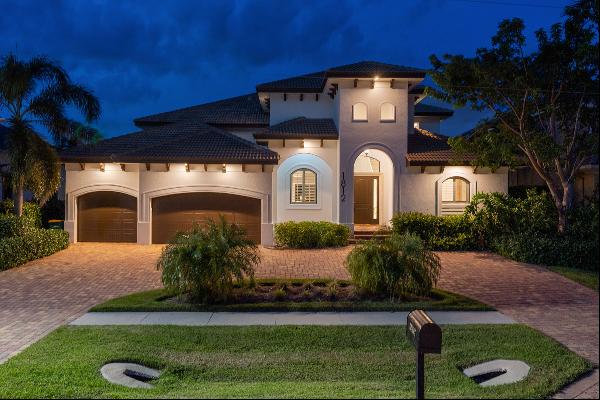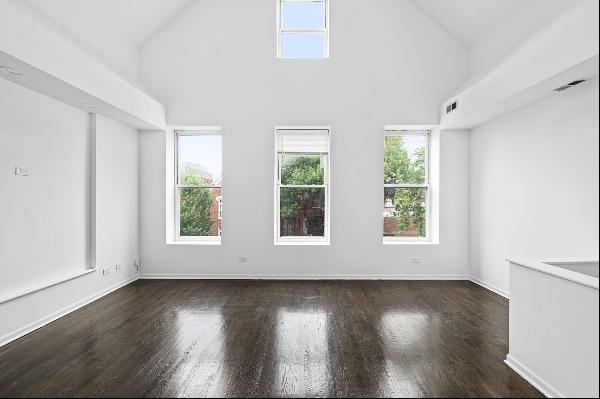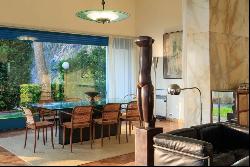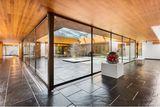
Is wabi sabi a philosophy or a design style? It’s notoriously difficult to delineate as a concept—so much so that in Wabi Sabi: The Japanese Art of Impermanence, author Andrew Juniper notes that “even the most ambitious Japanese scholars would give it a wide berth and uphold the Japanese tradition of talking about it in only the most poetic terms.”
Unlike a typical Western understanding of philosophy, wabi sabi can’t be reduced to tenets, axioms, or principles, nor can it be summed up by a set of stylistic rules. Instead, it’s a lived, aesthetic experience that permeates the everyday—making the mundane appear sublime.
To see the ethos of wabi sabi at work as both a visual style and a lifestyle, look to Villa Terra—a tranquil, 14-acre estate in Bucks County, Pennsylvania.
An All-Encompassing Sense of Serenity
Surfaces weathered and textured by time. Craftsmanship bearing the tell-tale traces of the human hand. Natural elements enhanced by objects, plants, and outdoor scenery. These are signature themes of a wabi sabi look, where contrived symmetry and artifice are superseded by a tangible appreciation for materiality and mutability.

Dana Lansing – Kurfiss Sotheby’s International Realty
At Villa Terra, a hewn entryway of stone steps leads straight to the heart of the home, where a foyer of simple, elegant furnishings leads to an expansive living room. Look underfoot at the tiles; unlike a typical show home where floors are uniform, every panel here is unique in tone and texture, unifying the organic, artistic, and authentic. The hearth is majestic because of its coarseness, matched by the coffee table—minimalistic in style, but maximalist in substance.
Embrace the Perfection of Imperfections
The name “Villa Terra” translates literally to “country house of the earth,” and the kitchen, with its rustic beauty and rough edges, demonstrates this with a distinctly wabi sabi aesthetic.

Dana Lansing – Kurfiss Sotheby’s International Realty
Notice how each of the hourglass stools differs slightly in structure, and how they’re neither planar, polished, nor even. Observe how the blemishes on the terracotta floors are flaunted rather than concealed, and how the woven rugs contribute layers of warmth and color without distracting from the functional simplicity of the space.
The Beauty and Warmth of the Well-Worn
How can wabi sabi be conveyed in words? “Wabi” (侘) has multiple meanings: simplicity, humility, melancholy, and an appreciation for serenity. Likewise, “sabi” (寂) is rich in possible interpretations, including the recognition that faded and worn-out objects have an intrinsic beauty. Together, they emphasize the value of reality and ephemerality—taking time to take stock of incredible beauty in an imperfect world.

Dana Lansing – Kurfiss Sotheby’s International Realty
With its remarkable views of the surrounding environment, Villa Terra’s primary suite invites quiet contemplation. Rugged stonework and raw textiles, juxtaposed with soft blankets and plush pillows, create an ambience of blissful, rejuvenating harmony.
Admire the Nuances of Natural Textures
Comfort is crucial. While wabi sabi interiors often appear spare, they’re not meant to be museums—seen but not touched; nor are they monasteries, where purpose overrides pleasure. Instead, they’re well-worn because they’re well-loved and built for a life well-lived.

Dana Lansing – Kurfiss Sotheby’s International Realty
The ensuite in Villa Terra epitomizes this, from the luminous wooden paneling of the custom sauna to the rich radiance of the terrazzo surfaces. It’s a space that’s beautiful in form because it’s beautiful in function, infused with an earthiness that feels as fabulous as it looks.
Celebrate Transition and Transformation
Wabi sabi is about engaging all the senses, which is why the grounds and gardens of Villa Terra are so spectacular. The breeze blowing through the canopy of the trees and the gentle babbling of Cooks Creek provide a soothing backtrack while enjoying the veranda, fire pit, and sunbathing patio. So too do the therapeutic aromas that change with the seasons, from blooming spring flowers to falling autumn leaves.
If there’s a lesson to learn from wabi sabi, perhaps it’s that the only true flawlessness can be found in flaws, and the only true timelessness can be found in age. It’s in this spirit that homes like Villa Terra continue to awe and inspire their residents.
Interested in learning more about features of Japanese design? See these six popular interior design trends.







